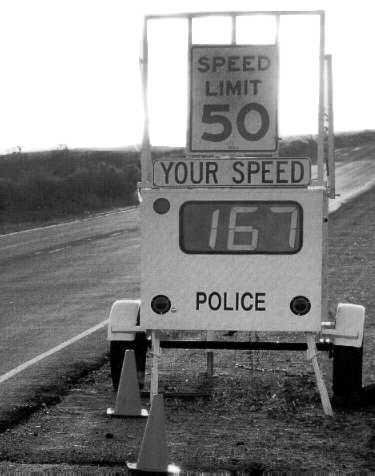 Have you guys heard this yet? I saw this on the news the other night and then today I found this story that lays it all out. I thought I’d share it with you so that when you are driving around Cincinnati in your new or used car you can be a little more vigilant about your speed. Tickets are a pain in the bum.
Have you guys heard this yet? I saw this on the news the other night and then today I found this story that lays it all out. I thought I’d share it with you so that when you are driving around Cincinnati in your new or used car you can be a little more vigilant about your speed. Tickets are a pain in the bum.
Here’s the story from Patrick O’Donnell, The Plain Dealer.
It’s all guessing.
Or, as the man in charge of police training standards for the entire state puts it, “dead reckoning.”
New police officers in Ohio receive no scientific training in estimating speeds of drivers in basic training. There’s no timing of cars over fixed distances, no special methods of determining an actual speed, nothing with stopwatches.
There is just a repetition of watching cars go by and guessing speeds, then seeing how the guesses matches up with what the radar says.
“There is no formula to apply,” said Robert Fiatal, executive director of the Ohio Peace Officer Training Commission. “It’s kind of a dead-reckoning kind of thing.”
An Ohio Supreme Court ruling Wednesday made a police officer’s visual estimate of speed enough to make a speeding ticket stick. Though that had been the case in most of the state, the appeals court covering Cuyahoga County had required more than an officer’s guess: radar readings or comparing a vehicle’s speed to the speedometer reading in a police cruiser.
The court ruled that an officer’s estimate can hold up all by itself if an officer is trained by the Ohio Peace Officers Training Academy or a similar academy and has experience gauging speeds.
The number of states that use that standard could not be determined Wednesday. Pennsylvania and Nebraska require more than just a visual speed estimate, though officers in those states have leeway to say a vehicle was traveling at an unsafe speed.
The Ohio Peace Officer Training Commission sets standards that all students in the more than 70 police academies in the state must meet to graduate. Officials from the police academies in Cleveland Heights and at Cuyahoga Community College each said they use the state curriculum.
Cleveland Heights Lt. Larry Shaffer said officers are taught to track – follow behind — vehicles suspected of speeding to determine speed, but the required state training allows a reasonable estimate.
“Before you would be certified you have to be fairly accurate with the naked eye,” he said.
Visually estimating the speed of vehicles is only a small part of a five-hour unit on speed, which also includes lessons on stopping distance, benefits of speed enforcement, types of speed laws, how to track a given vehicle and how to fill out a traffic ticket.
Traffic radar used to be part of basic training for all officers, but each department now trains its own officers in using the radar or laser system it owns.
State standards call for students to use four principles to estimate vehicle speeds: their own knowledge and experience in watching traffic, watching vehicles move past stationary objects, seeing if a vehicle is moving in an unusual way like bouncing or the driver is driving erratically.
But the required curriculum doesn’t tell students how to determine a specific speed using those principles.
Instructors must take students to areas with different kinds of traffic and have them estimate speeds. The instructor would use radar on the vehicle so the student can compare results.
“You just refine that and refine that by looking at the radar,” Fiatal said.
Standards call for students to estimate speeds of 20 vehicles and the instructor to calculate the difference between the estimate and the actual speed. Students pass if the average difference is five miles per hour or less.
Fiatal said that training is “certainly a start” for new officers to learn to estimate speeds. He said when they learn to use radar they will have more chances to measure their impressions against radar readings. As they gain more experience, guesses will be more educated.
What do you guys think? I want to hear your opinions.



